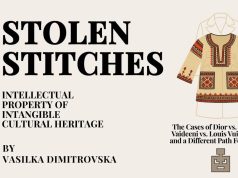Or as a Subtitle:
How to Shape the Message We Want to Convey
As an archaeologist, manager of European projects, and heritage consultant, part of my work involves constant communication with colleagues, students, the media, the business sector, and the general public, including everyone who reads my posts on social media. And every time, that communication requires language that is understandable to all involved parties.
One of the most important aspects of heritage interpretation is the way in which values from this field are shared and communicated. Communicating and visualizing scientific information from the heritage sector (whether natural, cultural, or intangible) demands immense communication skills from professionals. Since a medium, regardless of its format, is essentially any surface (or environment), real or virtual, that can convey a message.
In the United States, heritage interpretation is more of a communication tool, followed by an educational one. Perhaps this is because the field originated there, particularly within the National Parks of America. In contrast, in Europe, interpretation is more educational first and foremost, and then a powerful communication tool.
Depending on the type of heritage interpretation module (planning, writing, guiding, presenting, etc.), relevant communication tools are learned to address various elements of heritage.
This year, I conducted several workshops focused on communication and heritage, one of which was for colleagues in the fields of archaeology, history, and epigraphy, as part of the European project ‘Prometheus (Promoting Universal Values through Digital Epigraphy and Cultural Heritage)’. The title of my workshop was “Communicating Heritage Values through Interpretation, Storytelling, and Gamification,” and the main goal was to explain how heritage interpretation tools can be used when experts want to communicate the values of what they find, investigate, publish, and ultimately share with the professional community and all other interested parties. The presentation was online and can be viewed at the following link.
Communication is one of the most important aspects I pay special attention to during my training sessions, because creating an effective heritage message means creating a narrative that deeply resonates with the public, balancing scientific information with the values of the people receiving that information. By applying the principles of heritage interpretation, professionals learn how to craft messages that carry universal values without compromising the scientific integrity of any heritage element.
The photo embedded in the text is from the training I held in Durrës, Albania, as part of the ‘Reviving Via Egnatia’ project in partnership with UNESCO, where I dedicated significant time to train professionals and the local community on shaping the message about their local heritage they wish to communicate with the public and various heritage and cultural tourism stakeholders.
Due to the professional nature of my responsible work as a certified heritage interpretation trainer by Interpret Europe and UNESCO, I have an ethical obligation and responsibility to carefully consider how I share the heritage knowledge I want to convey. This is especially important because the information can shape someone’s opinion for both the short term and the long term.
In conclusion, I would add that heritage interpretation is not just about presenting facts and sharing universal values; it’s about creating lasting connections between people and the past. Through responsible, accurate, and understandable communication and interpretation of heritage information, we can inspire deeper respect for heritage, encourage its protection, and ensure that the stories continue to live on, passed down to future generations.





